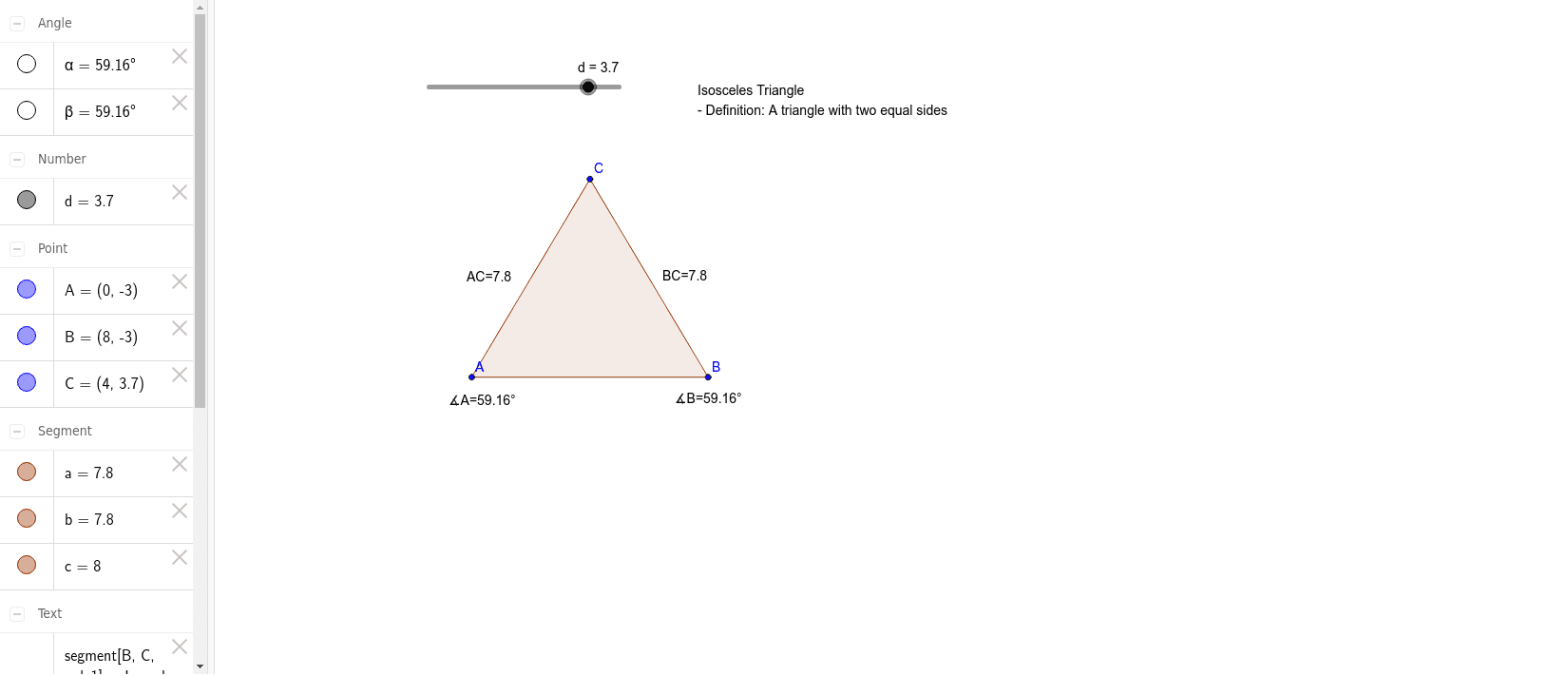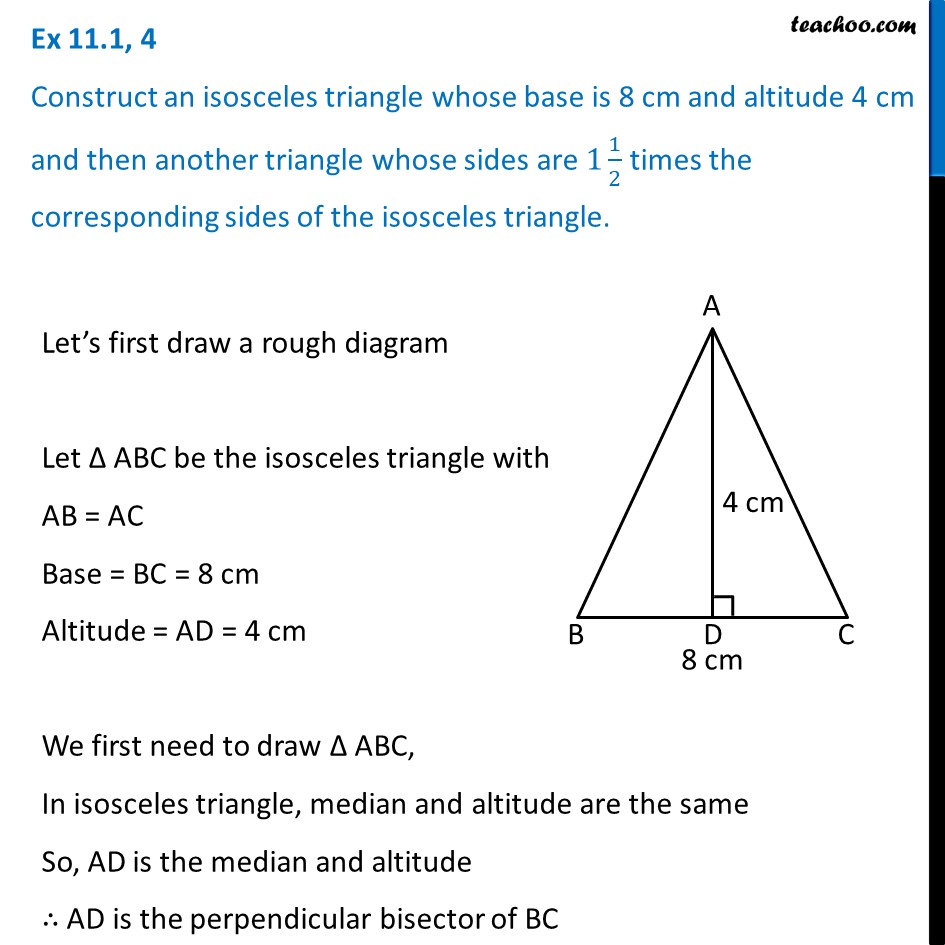
Isosceles right triangle sits along the base. Isosceles right triangle with a hypotenuse of the If you were to actually flatten it out, the cross sections would look like this. This cross section is going to look like this, if you were going to flatten it out. Sections of this figure, that our vertical, I should say our perpendicular to the X axis, those cross sections are going to be isosceles right triangles. Sections of the figure, that's what this yellow line is. What I've drawn here in blue, you could view this kind of the top ridge of the figure. Lets see if we can imagine a three-dimensional shape whose base could be viewed as this shaded in region between the graphs of Y is equal to F of X and Y is equal G of X. Your bounds should obviously be the least and greatest x-values that lie on the circle. You should have the base length from the previous step, which is all you need to find the cross-sectional area.Ĥ.
#Base of isosceles triangle calculator how to
The cross-section is an equilateral triangle, and you probably learned how to calculate the area for one of those long ago. Remember that to express a circle in terms of a single variable, you need two functions (one for above the x-axis and one for below it, in this case).ģ. A width dx, then, should given you a cross-section with volume, and you can integrate dx and still be able to compute the area for the cross-section. You know the cross-section is perpendicular to the x-axis. Integrate along the axis using the relevant bounds.Ī couple of hints for this particular problem:ġ. Find an expression for the area of the cross-section in terms of the base and/or the variable of integration.Ĥ. Find an expression in terms of that variable for the width of the base at a given point along the axis.ģ. Figure out which axis (and thus which variable) you'll be using for integration.Ģ. The area A is equal to the square root of the semiperimeter s times semiperimeter s minus side a times semiperimeter s minus a times semiperimeter s minus base b.I won't give you the answer, but I'll offer a general strategy for questions of that variety:ġ. You can find the area of an isosceles triangle using the formula: The semiperimeter s is equal to half the perimeter. Given the perimeter, you can find the semiperimeter.

#Base of isosceles triangle calculator plus
Thus, the perimeter p is equal to 2 times side a plus base b. You can find the perimeter of an isosceles triangle using the following formula: Given the side lengths of an isosceles triangle, it is possible to solve the perimeter and area using a few simple formulas. The vertex angle β is equal to 180° minus 2 times the base angle α. Use the following formula to solve the vertex angle: The base angle α is equal to quantity 180° minus vertex angle β, divided by 2. Use the following formula to solve either of the base angles: Given any angle in an isosceles triangle, it is possible to solve the other angles.

How to Calculate the Angles of an Isosceles Triangle The side length a is equal to the square root of the quantity height h squared plus one-half of base b squared. Use the following formula also derived from the Pythagorean theorem to solve the length of side a: The base length b is equal to 2 times the square root of quantity leg a squared minus the height h squared. Use the following formula derived from the Pythagorean theorem to solve the length of the base side:

Given the height, or altitude, of an isosceles triangle and the length of one of the sides or the base, it’s possible to calculate the length of the other sides. How to Calculate Edge Lengths of an Isosceles Triangle We have a special right triangle calculator to calculate this type of triangle. Note, this means that any reference made to side length a applies to either of the identical side lengths as they are equal, and any reference made to base angle α applies to either of the base angles as they are also identical. When references are made to the angles of a triangle, they are most commonly referring to the interior angles.īecause the side lengths opposite the base angles are of equal length, the base angles are also identical. The two interior angles adjacent to the base are called the base angles, while the interior angle opposite the base is called the vertex angle. The equilateral triangle, for example, is considered a special case of the isosceles triangle. However, sometimes they are referred to as having at least two sides of equal length. Isosceles triangles are typically considered to have exactly two sides of equal length. The third side is often referred to as the base. An isosceles triangle is a triangle that has two sides of equal length.


 0 kommentar(er)
0 kommentar(er)
